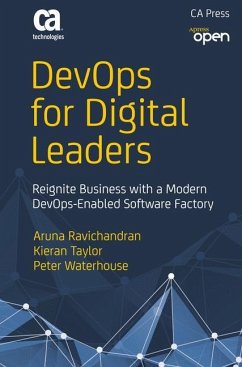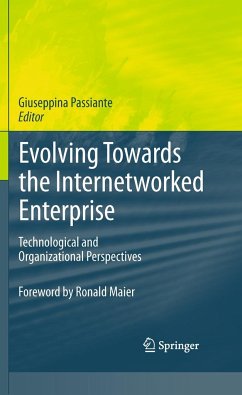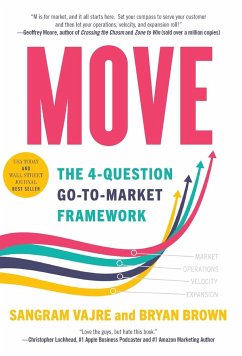
Move to Devops
Change the Way You Manage Your It
Versandkostenfrei!
Versandfertig in über 4 Wochen
50,99 €
inkl. MwSt.

PAYBACK Punkte
25 °P sammeln!
Examine the importance of focusing your organization on the customer's needs rather than on its internal functioning. Using different DevOp models, this book explains the need to continuously adjust and produce value for your customers. Talking about Devops in a company most often means talking about automating IT operations and setting up CI/CD chains. But these engineering practices are only part of a global approach inherited and linked to Lean IT. You'll begin by reviewing how enabling companies to take full advantage of the value generated by the digitalization of all or part of their bus...
Examine the importance of focusing your organization on the customer's needs rather than on its internal functioning. Using different DevOp models, this book explains the need to continuously adjust and produce value for your customers. Talking about Devops in a company most often means talking about automating IT operations and setting up CI/CD chains. But these engineering practices are only part of a global approach inherited and linked to Lean IT. You'll begin by reviewing how enabling companies to take full advantage of the value generated by the digitalization of all or part of their business are challenges to which Lean practices and, by extension, Devops respond. By understanding these challenges and how Devops responds to them, you can more efficiently dig into its technical applications. This will ensure that technology promotes business success in a symbiotic form that crosses the domains of an organization, culture, and engineering. The book then presents the technical applications of DevOps and explains why it is crucial to adopt continuous integration and deployment. It details how to manage the artifacts produced, and the deployment and automation strategies to be used in different contexts. Move to DevOps provides a comprehensive roadmap of the DevOps practices needed to navigate the most difficult IT project challenges. What You'll Learn * Understand the technical applications of DevOps, including continuous integration and deployment. * See how different organizational models implement DevOps principles to drive efficiency and collaboration. * Enable companies to leverage the value of digitalization. * Prioritize customer needs and shift the organization's focus from internal functioning to customer-centricity. * Explain and promote Lean and Agile approaches. Who This Book Is For Anyone seeking to integrate DevOps and Lean practices into their organization, including IT managers, team members, and managers from other industries. -












